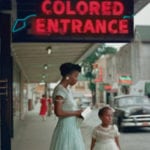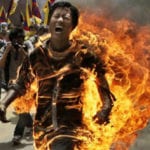 Movies and TV
Movies and TV  Movies and TV
Movies and TV  History
History 10 Things You Didn’t Know About the American National Anthem
 Technology
Technology Top 10 Everyday Tech Buzzwords That Hide a Darker Past
 Humans
Humans 10 Everyday Human Behaviors That Are Actually Survival Instincts
 Animals
Animals 10 Animals That Humiliated and Harmed Historical Leaders
 History
History 10 Most Influential Protests in Modern History
 Creepy
Creepy 10 More Representations of Death from Myth, Legend, and Folktale
 Technology
Technology 10 Scientific Breakthroughs of 2025 That’ll Change Everything
 Our World
Our World 10 Ways Icelandic Culture Makes Other Countries Look Boring
 Misconceptions
Misconceptions 10 Common Misconceptions About the Victorian Era
 Movies and TV
Movies and TV The 10 Coolest Stars to Set Sail on The Love Boat
 History
History 10 Things You Didn’t Know About the American National Anthem
 Technology
Technology Top 10 Everyday Tech Buzzwords That Hide a Darker Past
Who's Behind Listverse?

Jamie Frater
Head Editor
Jamie founded Listverse due to an insatiable desire to share fascinating, obscure, and bizarre facts. He has been a guest speaker on numerous national radio and television stations and is a five time published author.
More About Us Humans
Humans 10 Everyday Human Behaviors That Are Actually Survival Instincts
 Animals
Animals 10 Animals That Humiliated and Harmed Historical Leaders
 History
History 10 Most Influential Protests in Modern History
 Creepy
Creepy 10 More Representations of Death from Myth, Legend, and Folktale
 Technology
Technology 10 Scientific Breakthroughs of 2025 That’ll Change Everything
 Our World
Our World 10 Ways Icelandic Culture Makes Other Countries Look Boring
 Misconceptions
Misconceptions 10 Common Misconceptions About the Victorian Era
10 Bizarre But Memorable Sporting Moments From History
The world of sports has given us plenty of memorable moments: World Cup finals, Super Bowls, Jesse Owens at the Berlin Games, the Miracle on Ice, and more. Still, there have been plenty of bizarre sporting moments, too. But they are original and intriguing enough to warrant a closer look.
10 Fireworks Boxing

Boxing is a sport that has been practiced since ancient times, so it’s no surprise that we have tried various methods to spice it up a bit. In 1937, people thought they found a real winner—fireworks. But this wasn’t simply a light show after the match. Instead, the fireworks happened throughout the bout because they were attached to the fighters.
A metal framework in the shape of a person held the fireworks and was attached to each boxer. Then, to make it even more hazardous, the boxers fought in the dark so the audience could fully enjoy the fireworks display. In case you have concerns about the safety of the fighters, don’t worry. They were protected by wearing thick fireproof suits made with asbestos.
Surprisingly, this didn’t really take off as a new method of boxing. Only one such exhibition match took place in London in 1937.
9 One-Limbed Cricket

During the middle of the 19th century, cricket was experiencing its first golden age. After becoming the preferred national pastime in England, it expanded into other countries, mostly parts of the British Empire. But in 1848, a game of cricket was played at the Priory Ground in Lewisham unlike any other—a team of one-armed players took on a team of one-legged players.
All of the cricketers were Greenwich pensioners, navy men who were injured in combat and resided at the Royal Hospital. In preparation for their big match, the men had a large dinner the night before and a large lunch the day of the game. They celebrated the match with a drinking session at the Bull Inn.
For them, this was all about having a bit of fun. But that didn’t stop over 2,400 people from attending the match and even betting on the outcome. The one-armed team was favored to win—and they did—although nobody was really concerned with the final score.
Even though we said that this match was unlike any other, that’s not exactly true. The first one took place in 1796, and it was also between injured sailors. Back then, the game had real stakes—1,000 guineas. When the game finished earlier than expected, the one-legged team organized an impromptu race between its teammates to cap off the show.
8 The Player Who Snubbed Hitler
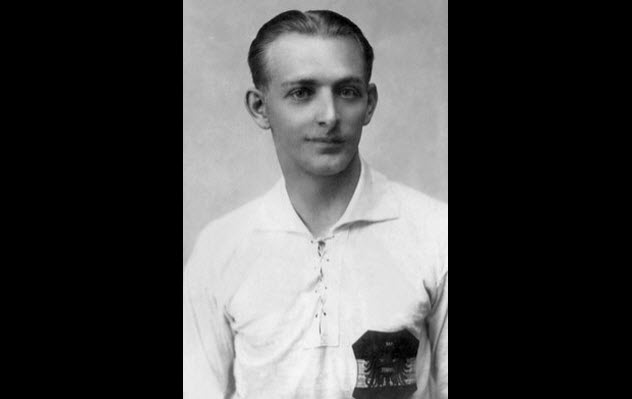
Matthias Sindelar is one of the greatest Austrian footballers of all time. Known as the “Paper Man” for his slight build, Sindelar earned his greatest professional success as captain of the Austrian national team during the 1934 World Cup.
Austria qualified again for the 1938 World Cup, but there was a problem. By that time, Nazi Germany had already invaded and annexed Austria. On April 3, 1938, Austria played one last football match against Germany before the Austrian team was dissolved and the players incorporated into the German team. It was meant to be a celebration match marking Anschluss, the return of Austria to the fatherland.
However, Sindelar saw it as the perfect opportunity to show how he really felt. First, he insisted that the team wear their red-and-white kits, Austria’s national colors, instead of the traditional white-and-black.
There have always been rumors that Austria was told to lose the match or play to a draw. According to eyewitnesses, the Austrian team appeared to miss several shots on purpose. However, toward the end of the game, they had a change of heart and beat Germany 2–0. Sindelar scored the first goal and then celebrated in front of a VIP box filled with high-ranking Nazi officials.
Afterward, Sindelar refused to join the German national team, saying he wanted to retire due to old age and injury. Less than a year later, he was dead of accidental carbon monoxide poisoning, although many have questioned whether it was truly an accident.
7 Wichita Monrovians vs. Klan Lodge #6

On June 21, 1925, the baseball field on Wichita’s Island Park hosted a unique exhibition game between the Wichita Monrovians, a semiprofessional African-American team that played in various Negro leagues, and the baseball team of Lodge #6 of the Ku Klux Klan.
Since the Monrovians were not a professional team, they played against many amateur white teams throughout the US. The reception they got varied wildly based on their location, but it seemed that Wichita was on the positive side of the spectrum.
In fact, by 1925, the Klan’s influence there was starting to wane. This is likely one of the reasons why they wanted to play (and beat) an African-American baseball team in the first place. The Monrovians also wanted to show their superiority, so the game was a PR move for both sides.
Both teams encouraged their fans to attend the game, and a large interracial crowd was present that day. There was a fear of violence, but the teams promised that “all the fans will see is baseball.” Surprisingly, they were right. The game took place without incident, and the Monrovians won 10–8.
6 The Kirkwall Ba
The Orkney Islands form an archipelago in the northern part of Scotland. Kirkwall, the capital of Orkney, hosts a game called the Kirkwall Ba every year. The Ba game is a modified version of mob football and is played throughout various towns in Scotland. But the one in Kirkwall is the largest of its kind and has a long tradition. No one’s sure when the game originated, but we know it is at least 300 years old.
According to legend, the Kirkwall Ba was created to commemorate the death of Tusker, an evil Viking tyrant named for his long, protruding teeth. An unidentified young man defeated Tusker and chopped off his head. However, one of Tusker’s teeth scratched the boy’s leg, causing a fatal infection.
With his last breath, the brave young man reached Kirkwall and threw Tusker’s head into the crowd. Angered by the young man’s death but happy at Tusker’s demise, the people started kicking the head through the streets of Kirkwall. According to legend, that’s how the Ba got started.
The Ba has been taking place as we know it today since the mid-19th century. Hundreds of men participate. They are either Uppies or Doonies based on whether their ancestors lived up or down from the Mercat Cross. The Doonies’ goal is in the sea of Kirkwall Bay while the Uppies must score on the site of the old town gates.
5 Blondin Crossing Niagara Gorge
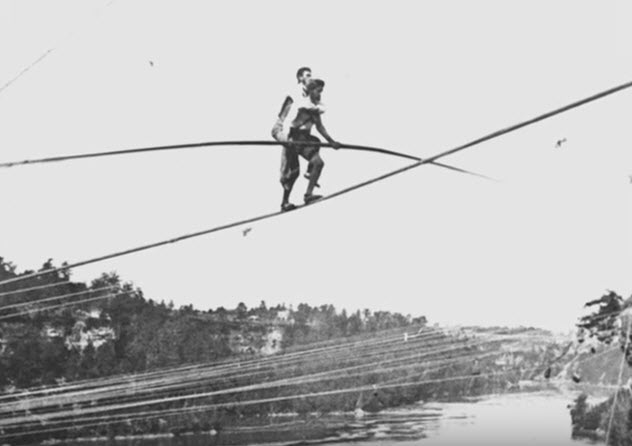
Daring feats of acrobatics always guarantee a large crowd tantalized by the prospect of someone meeting a gruesome end. Of all these feats, few are more dangerous than the tightrope walk. Going back to the mid-19th century, we have arguably the greatest tightrope walker of all time—Charles Blondin. Arriving in America in 1955, he soon dreamed up the idea that brought him fame and fortune: crossing the gorge over Niagara Falls on a tightrope.
This was long before Annie Edson Taylor became the first person to go over the falls in a barrel. Suffice it to say that most of the 25,000 people who attended Blondin’s spectacle were expecting to see a suicidal man fall to his death.
However, Blondin understood mankind’s fascination with the morbid and even encouraged people to bet on his ghastly death. On June 30, 1859, despite everyone’s doubts, Blondin became the first person to walk across the Niagara Gorge on a tightrope. To increase the excitement, he stopped halfway across, sat down, and had a bottle of wine.
After he reached the Canadian side, Blondin rested for 20 minutes and then returned to the other bank. This time, he carried a daguerreotype camera and stopped to take a picture.
Blondin repeated the feat several times, finding new ways to shock his audience each time. He walked the tightrope backward. He did it blindfolded. He carried his manager piggyback. One time, he even took utensils and food with him, stopping at the halfway point to make an omelet.
4 The Chalmers Award
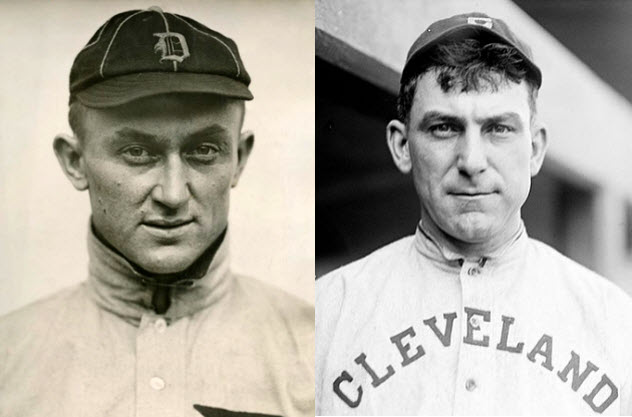
Back in 1910, two of America’s favorite pastimes came together—baseball and automobiles. Hugh Chalmers, owner of the Chalmers Automobile Company, decided to award a Chalmers Model 30 to the league batting champion. By the end of the season, it was a close race between two players—Ty Cobb of the Detroit Tigers and Nap Lajoie of the Cleveland Naps.
With just two games to go, Cobb was in the lead with a .385 average. He decided to sit out the games to hold the first position. Meanwhile, Lajoie played an almost perfect game in Cleveland’s last match against the St. Louis Browns. He went 8-for-9 and scored in a doubleheader.
But he had some help from the opposing team. Ty Cobb was the most disliked player in the league while Lajoie was exactly the opposite. Even Lajoie’s team was renamed after him due to his popularity. Browns manager Jack O’Connor allowed Lajoie to score hits by playing his third baseman deep for the whole game, giving Lajoie easy bunts.
Lajoie finished with a .384 average, but controversy surrounded the entire event. Cobb was criticized for not playing, and the Browns were panned for helping a player on the opposing team. Cobb was ruled the official batting champion, but Chalmers declared it a tie and gave both players cars to take advantage of Lajoie’s popularity.
In 1989, the controversy resurfaced when it was discovered that Cobb had been awarded two extra hits that season by mistake, so his real average was .383.
3 1904 Olympics
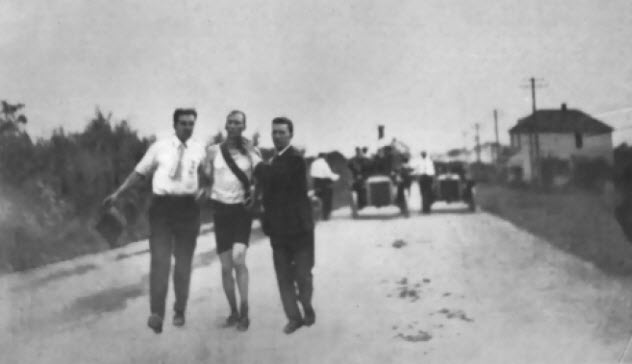
The 1904 Olympic marathon was one of the oddest sporting events in history, plucked straight out of a slapstick comedy. For starters, there was an argument over where the games should be held. The Olympics were originally awarded to Chicago. But St. Louis had the world’s fair at the same time, and they threatened to organize their own sporting events to overshadow the Olympics if the event wasn’t moved to St. Louis. Their threat worked.
Most of the athletes were American. Especially impressive was gymnast George Eyser who won six medals even though he had a wooden leg.
Throughout the Olympics, the organizers scheduled “Anthropology Days“—exhibits where various tribesmen displayed their culture and traditions. Occasionally, they were invited to participate in sporting events to supposedly show how inferior they were to the “white man.” It was just a tiny step above the human zoos that were popular at prior world’s fairs.
As for the marathon, it was initially won by Fred Lorz, but he was disqualified after it was revealed that he had traveled 18 kilometers (11 mi) of the race by car. The real winner was Thomas Hicks, although he had taken performance-enhancing drugs. Specifically, he took strychnine, which acted as a stimulant in small doses.
But that wasn’t the end of the weirdness. Andarin Carvajal, a Cuban postman, competed in his street clothes. During the race, he stopped in an orchard where he accidentally ate some rotten apples and had to take a nap to recover. Even so, he came in fourth.
Another runner named Len Tau was the first black African to compete in the Olympics. He finished ninth. But he had a good excuse—he ran 2 kilometers (1 mi) off course because he was chased by wild dogs.
2 Tour Of Shame
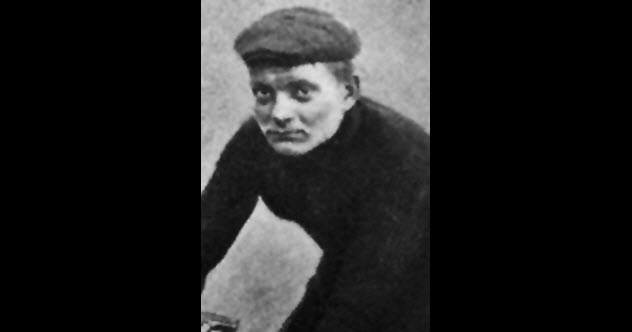
Nowadays, we associate the Tour de France with cheating, but the two have been strongly linked almost from the start. The first race was organized in 1903 by French newspaper L’Auto to increase readership.
It was won by Maurice Garin and proved successful enough to warrant another tournament in 1904, which was rife with such blatant cheating that it makes our modern cycling scandals tame by comparison. In fact, Tour de France founder Henri Desgrange was so “disgusted, frustrated, and discouraged” that he wanted to cancel future events. But he eventually changed his mind.
In the 1904 event, 88 riders participated, with 27 crossing the finish line. But only 15 did it fairly. Almost half were disqualified for cheating, including the first four cyclists and all the stage winners. Initially, Maurice Garin won again. But after months of investigation, fifth-place Henri Cornet was awarded the trophy.
Cyclists were allowed to take almost anything, so there were no doping scandals. In fact, alcohol, cocaine, and chloroform were part of the standard rider diet for decades. Most of the cheating involved using shortcuts, traveling by car or train, and throwing nails on the road.
Riders also relied on angry mobs to beat up the competition when passing through their hometowns. The worst incidents occurred in Saint-Etienne where 100 people armed with stones and cudgels attacked the riders to allow Antoine Faure to take the lead. Giovanni Gerbi was beaten unconscious, and his fingers were broken. From then on, many cyclists were armed with revolvers.
1 Monkey Testicle Doping Scandal

The Wolverhampton Wanderers is an English football club with a long tradition going back to 1877. Throughout its existence, the club has been highly influential. It was one of the founders of the Football League in the UK and later helped to establish the European Cup, which eventually became the UEFA Champions League.
Managed by Major Frank Buckley, the club became involved in the strangest doping scandal in sports history in 1939. Buckley had heard of a revolutionary technique pioneered by surgeon Serge Voronoff that involved grafting tissue from monkey testicles onto human testicles as a rejuvenation method. In fact, his treatment was quite popular throughout the 1920s and ’30s.
Buckley had his players undergo the procedure. He announced it to the media and other clubs, arguing that it wasn’t doping and that there were no rules against it. After the procedure, there appeared to be an improvement in his players’ stamina and strength that was immediately attributed to the rejuvenation therapy.
However, any changes were likely the result of the placebo effect. Even so, more football clubs soon adopted the technique. But other clubs protested so vehemently that the House of Commons had to debate in 1939 whether football players were allowed to use monkey testicles. Eventually, the practice fell out of favor, and Voronoff was ridiculed for his beliefs.
Radu is a history/science buff with an interest in all things bizarre and obscure. Share the knowledge on Twitter or check out his website.





